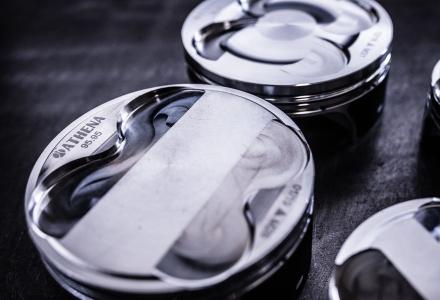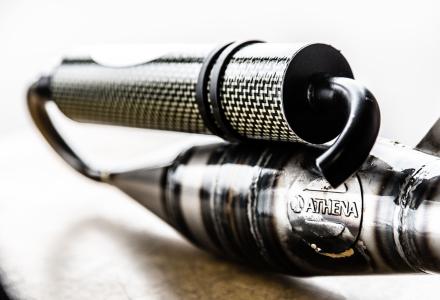What a Motorcycle Clutch Is and Problems: Adjustment and Replacement
The clutch is a fundamental mechanical connecting component within vehicles, whether they are cars or motorcycles. The term "clutch" refers to the necessary friction that allows one element to drag another. This friction is generated by key elements of the clutch, namely flat disks that efficiently maintain kinetic inertial energy.
In this article, we will explore what does the clutch do, how does a clutch work, what is a clutch, its purpose, the most common types, and how long does a clutch last, and how to adjust and maintain a motorbike clutch to avoid issues.
What does a clutch do and where is it located
The clutch in a motorcycle is a crucial component that manages the power flow between the engine and the transmission. The clutch slave cylinder is a device that can be engaged to interrupt or allow the transmission of engine power to the driving wheel.
The motorcycle clutch is located between the crankshaft and the primary crankshaft of the gearbox. It acts as a connecting and disconnecting element, especially during gear changes or vehicle stops. Essentially, the clutch allows gradually combining the rotation of the engine shaft with the primary shaft of the gearbox, providing the rider with essential control over the motorcycle through acceleration, deceleration, and modulation of movement without turning off the engine.
The core of a motorcycle clutch consists of cork-lined friction disks and steel disks arranged in a sandwich. This configuration ensures the proper functioning of the clutch system, as the contact between the lined disks and the steel disks regulates the transmission of power between the engine and the transmission.

Motorcycle clutch: difference between oil-bath and dry clutches
In motorcycles, clutches are commonly composed of disks immersed in specific oil, known as "oil-bath friction disks," reducing gear wear, minimizing heat, and producing less noise. They are generally made of a combination of friction material and steel. It's important to note that some brands, like Ducati, adopt dry clutches which do not require immersion in oil, thereby increasing the vehicle's power and being easier to maintain or replace.
In some cases, both in off-road and road motorcycles, a clutch bell may be present, designed to withstand extreme stresses typical of off-road use, ensuring reliable performance during off-road riding.
Hydraulic, mechanical, or multi-plate clutches: differences
In general, there are two main types of clutches: hydraulic and mechanical. Keep reading to discover their characteristics, differences, advantages, and disadvantages.
- Hydraulic clutches use hydraulic fluid to transmit power between the engine and the transmission, providing a smoother action and greater durability compared to mechanical clutches, which use a lever mechanism. Hydraulic clutches are widely used in off-road and road motorcycles, offering responsiveness and precise control. They ensure a light and consistent lever, as well as reduced maintenance requirements, providing uniform control during use. However, it's essential to note that, in case of malfunctions, repairs can be complex and require specialized skills.
- Mechanical clutches are commonly adopted in motocross and road motorcycles, thanks to their robustness and ease of maintenance. They allow greater control over the clutch position and are relatively simple to repair. However, they require a sturdier lever and may need more frequent maintenance, especially in extreme conditions.
Based on structure, clutches also distinguish between single-disc – mainly found in cars – and multi-plate clutches. Multi-plate clutches, with multiple friction disks, offer higher power transmission capacity and better heat dissipation than single-disc clutches They are often used in big bore motorcycles, cruisers, and high-performance models because of their superior power management capacity and lower tendency to overheat. They also provide greater durability. However, they are usually heavier and more complex, requiring meticulous periodic maintenance.
How to use a clutch on a motorbike is an essential skill that riders need to master for optimal control and performance.

Motorcycle clutch: common problems and major issues
A properly functioning clutch is essential for smooth motorcycle riding, preventing overheating, and extending the life of clutch components.
It is crucial to understand the main problems that can affect the clutch system, as this is a critical component directly influencing vehicle performance and drivability. Let's briefly examine the most common clutch problems and symptoms issues associated with motorcycle clutches.
Hard or non-disengaging clutch: how to adjust it
It is of fundamental importance to recognize the signs of a clutch that is too hard or does not disengage correctly. These symptoms include:
- Difficulty in gear engagement
- Excessive clutch slipping
- Motorcycle clutch adjustment tool requiring disproportionate effort from the rider
To address these issues, in the case of hydraulic clutches, it is recommended to regularly replace the fluid in the clutch master cylinder to ensure the correct pumping pressure. It is advisable to use DOT 4 or DOT 5 oil.
For mechanical clutches it is necessary to adjust the clutch lever and cable to achieve the desired friction point. To do this, carefully follow the manufacturer's specifications and guidelines for precise adjustment
Adjusting clutch motorcycles becomes crucial to maintaining optimal performance.
Understanding the intricate mechanics and interactions involved in how does a motorbike clutch work provides insights into troubleshooting and addressing potential issues effectively
When facing clutch problems beyond simple adjustment it is essential to consult an experienced mechanic. A professional with specific skills can diagnose and resolve more complex clutch problems contributing to maintaining the safety and optimal performance of the motorcycle.
Worn or burnt clutch: symptoms in motorcycles
The ability to identify the symptoms of a worn or burnt clutch is crucial for motorcyclists. Some typical symptoms to watch out for include:
- Difficulty in gear engagement
- Clutch lever showing resistance
- Undefined friction point
- Burnt odor
- Loss of motorcycle power
- “Slipping” phenomenon, where the motorcycle cannot effectively transfer power to the wheels
It is essential to distinguish between normal wear and clutch burning. While normal wear is a gradual process caused by regular friction between clutch components and can be managed with proper maintenance, burning represents a more severe condition, often resulting from overheating, and can cause permanent damage to clutch components.
The effects of a worn or burnt clutch on motorcycle performance and safety are significant. A damaged clutch reduces transmission efficiency, resulting in a loss of power and acceleration capability. This impact can be particularly critical in emergency situations and during complex maneuvers. Therefore, timely replacement of clutch components is crucial to ensuring optimal performance and maximum safety on the road.

How to tell if the motorcycle clutch needs repair: replacement guide
To understand if it is necessary to replace a motorcycle clutch it is essential to recognize unmistakable signs indicating problems:
- Constant slipping of the clutch even after accurate adjustment
- Clutch brake adjustment resistance
- Unreliable friction point
- Appearance of unusual noises from the clutch itself or visible damage to its components
When one or more of these symptoms occur, it is likely that a clutch replacement is necessary.
In general, for this type of intervention, it is highly advisable to consult an experienced mechanic and avoid do-it-yourself, especially if you lack experience in clutch repairs. This is a critical component for the safety and performance of the motorcycle, so it is essential that the replacement is carried out appropriately.
As for the expected clutch replacement costs in Italy, it's important to note that they can vary significantly based on various factors, including the type of motorcycle, brand and model, geographical region, and the specific mechanic chosen. In general, one can expect to spend around 100 to 500 euros for the replacement of a motorcycle clutch at a mechanic.
When proceeding with the purchase of a new clutch it is advisable to opt for a quality component suitable for the type of motorcycle in question. During installation, it is essential to carefully follow the instructions provided by the vehicle manual. Additionally, consider a comprehensive review of the clutch system, including cables and levers, to ensure optimal system operation.
If you are looking for a new clutch you can refer to our online shop Athena: we offer clutch discs kits for various motorcycle applications. The discs in all Athena kits exactly match the thicknesses and dimensions of the original components. Highly resistant to corrosion, they ensure maximum longevity and reliability even in extreme usage conditions. Discover friction plates with clutch cover and steel clutch plates for off-road 2 or 4-stroke motorcycles, as well as the complete range of Athena motorcycle spare parts.




